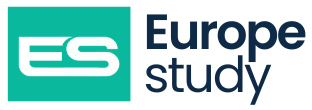
How to Increase Your Chances of Admission to a Danish University
Denmark is a popular destination for international students, known for its high-quality education system, innovative teaching methods, and globally recognized degrees. If you're planning to apply to a university in Denmark, it’s essential to be well-prepared and informed about the application process. By understanding entry requirements, utilizing the correct application channels, and submitting complete and timely documentation, you can significantly increase your chances of admission.
Here’s a step-by-step guide to help you navigate the application process successfully.
1. Understand Entry Requirements and Program Expectations
Recognized Academic Qualifications
To be eligible, your academic credentials must be equivalent to a Danish upper secondary school leaving certificate. Each program and institution may have additional or specific prerequisites, so it’s important to check individual program requirements on the university’s official website.
Language Proficiency
Most programs require proof of English proficiency, typically through standardized tests like TOEFL or IELTS. If you are applying to a program taught in Danish, you will likely need to demonstrate your proficiency in the Danish language as well.
2. Apply Through the Centralized System (Optagelse.dk)
All applications to undergraduate programs in Denmark are submitted through the official centralized system: Optagelse.dk.
Key Points to Note:
-
Application Period: The online application portal opens on February 1st and closes at 12 noon (CET) on March 15th.
-
Multiple Applications: You can apply for up to eight programs across different universities in a single application cycle.
-
Signature Page Requirement: After submitting your application, you must print, sign, and send the signature page to each institution. This document contains your application ID and allows the university to access your application.
3. Prepare and Submit Required Documents
To ensure your application is complete and properly evaluated, prepare the following documents:
-
Translated Academic Records: All transcripts, diplomas, and certificates must be officially translated into English(or Danish if applicable).
-
Proof of Bachelor’s Degree: For Master’s programs, you will need to provide evidence of an internationally recognized Bachelor’s degree of a good standard.
-
Language Test Results: Submit valid proof of English or Danish language proficiency, depending on the program’s language of instruction.
-
Additional Materials: Some programs may require specific subject courses, minimum grades, or additional tests. Always check for program-specific requirements.
4. Plan Ahead and Stay Informed
Meet Deadlines
The application deadline is March 15th at 12 noon (CET). Late applications are not usually accepted, so be sure to submit all required materials before the deadline.
Start Early
Initiate the application process as early as possible. This gives you time to gather documents, meet language requirements, and resolve any unforeseen issues that may arise.
Research Thoroughly
Each university and program may have unique admission criteria. Take the time to research your chosen institution and tailor your application to align with its specific expectations.
Contact the Admissions Office
If you have any questions about the process, it’s advisable to reach out directly to the university’s admissions office. They can provide personalized guidance on eligibility, documentation, and program-specific requirements.
Applying to study in Denmark requires careful planning, attention to detail, and adherence to deadlines. By ensuring your qualifications meet program standards, submitting a complete application through optagelse.dk, and preparing all required documents, you’ll greatly improve your chances of gaining admission. With the right preparation, you could soon be embarking on an exciting academic journey in one of Europe’s most innovative education systems.





